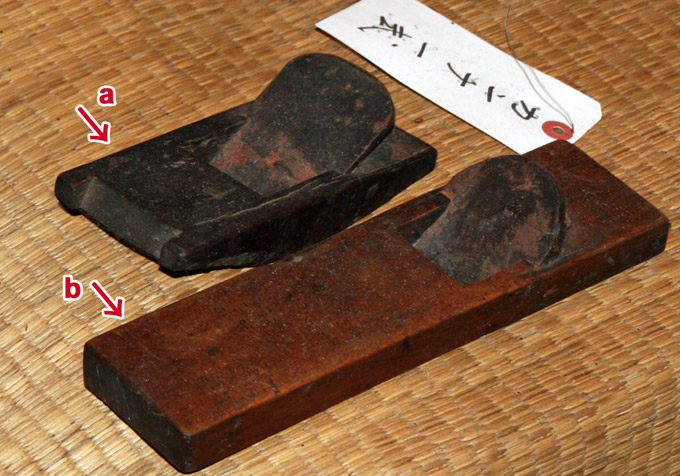A smoothing
plane. The hiraganna is used for smoothly planing the surface of
a board or pillar. Of the many types of planes *kanna
鉋, it is the most frequently used. There are various types of smoothing
planes, graded according to their use from the preliminary roughing plane
to the special finishing plane. The series of hiraganna is used
in order, beginning with the preliminary roughing plane, oni-arashikou
ganna 鬼荒仕工鉋, used to cut away major surface irregularities, then the
general roughing plane *arashikou
ganna 荒仕工鉋 and the muratorikanna むらとり鉋. The finishing planes
are the *chuushikou
ganna 中仕工鉋, the *joushikou
ganna 上仕工鉋, and the *shiageganna
仕上鉋. The planes used are selected according to the condition of the wood
surface, but generally the three stages of general roughing, finishing and
special finishing are sufficient. For example, timber planed with the joushikou
ganna and the shiageganna is glossy with a very fine surface
quality. Apart from the preliminary roughing plane, all hiraganna
use a double blade, nimaiba 二枚刃, and are therefore known as a joint
plane, awaseganna 合せ鉋. Two blades are used because this pares the
timber against the grain.
|



